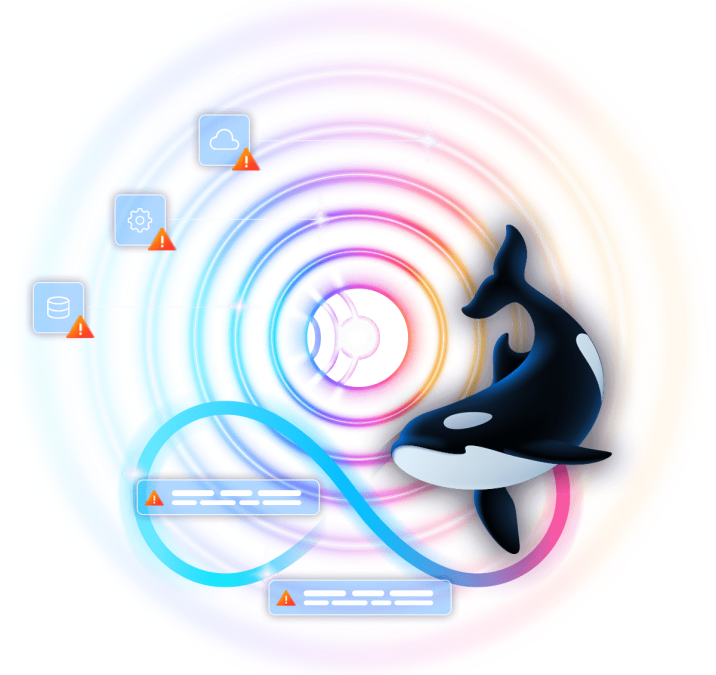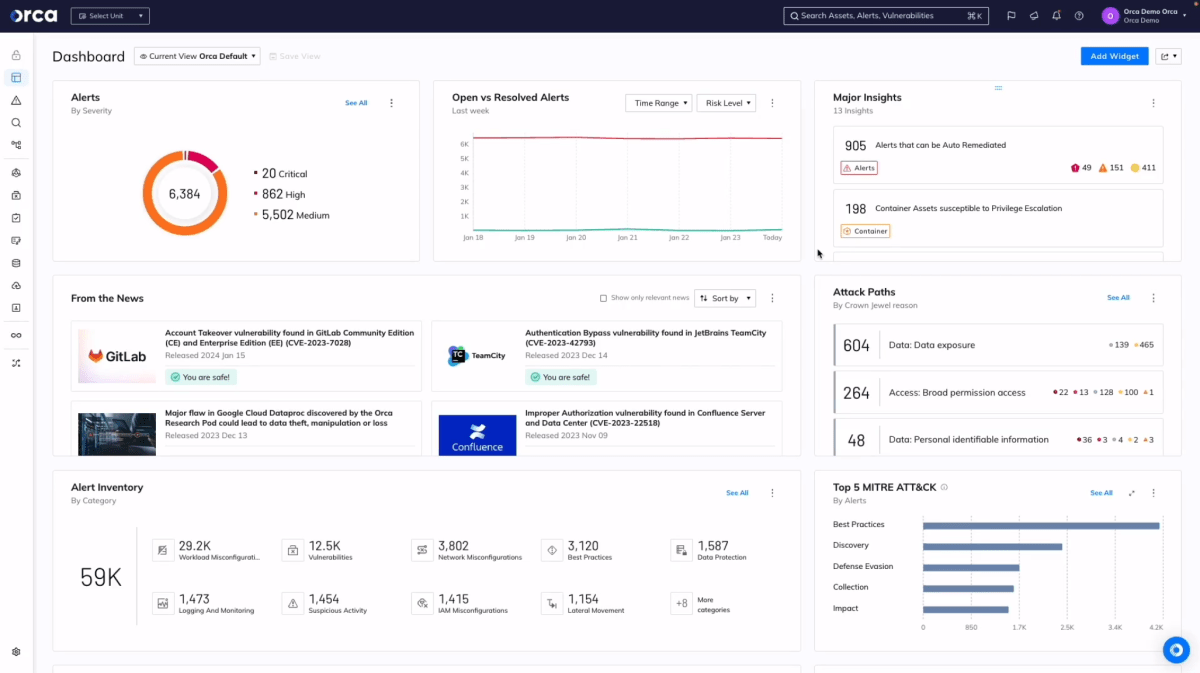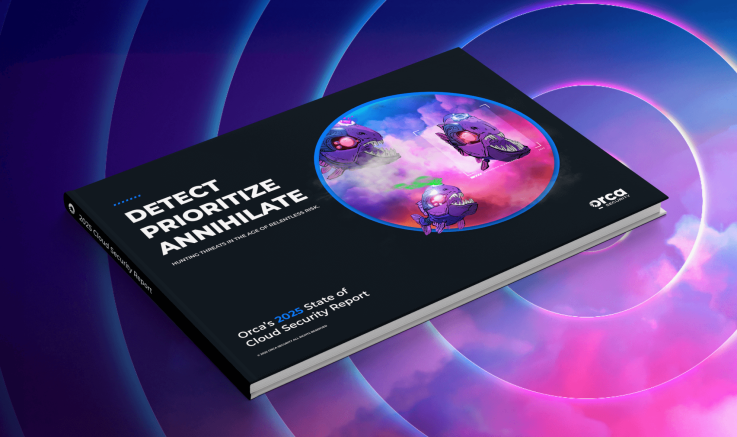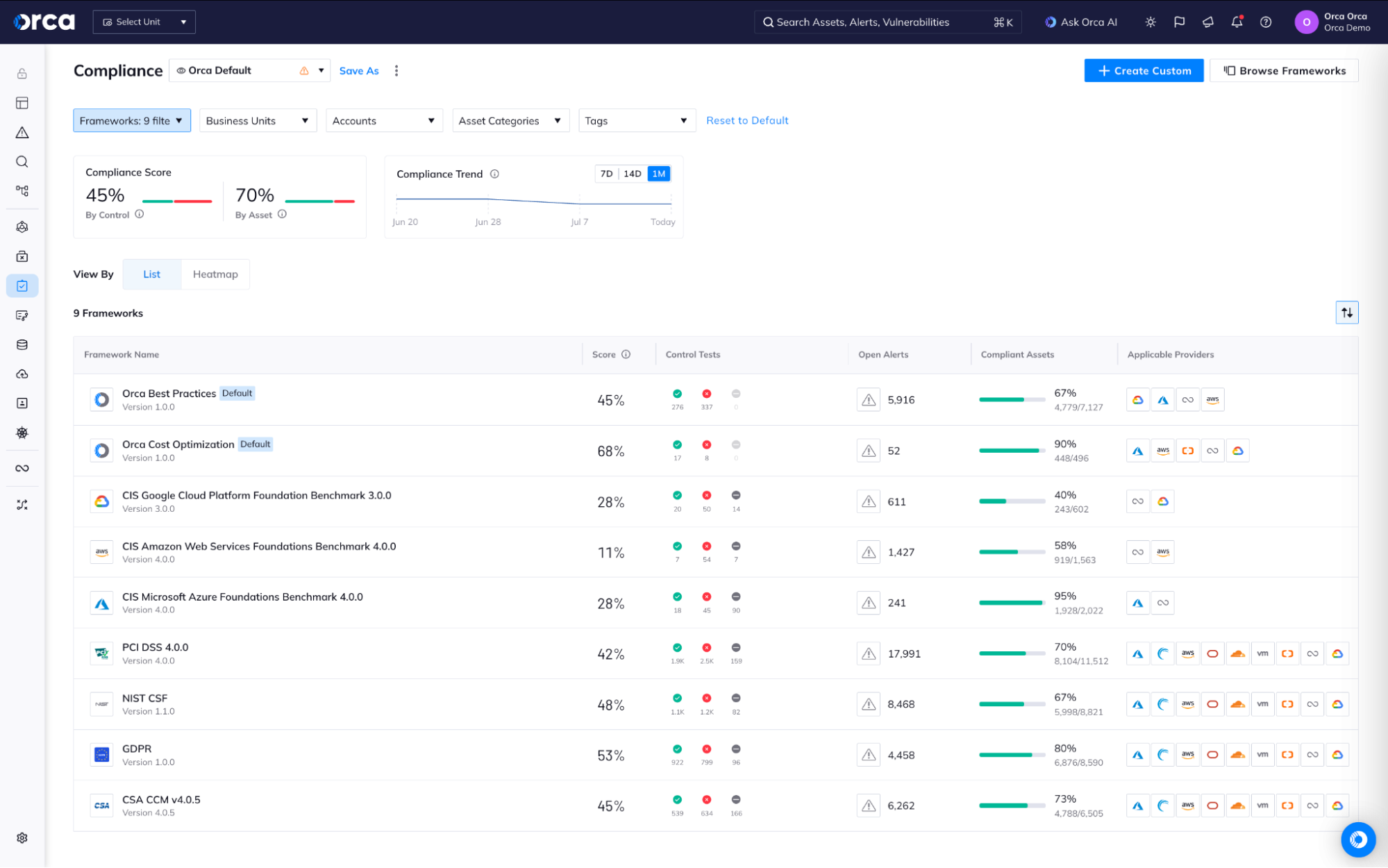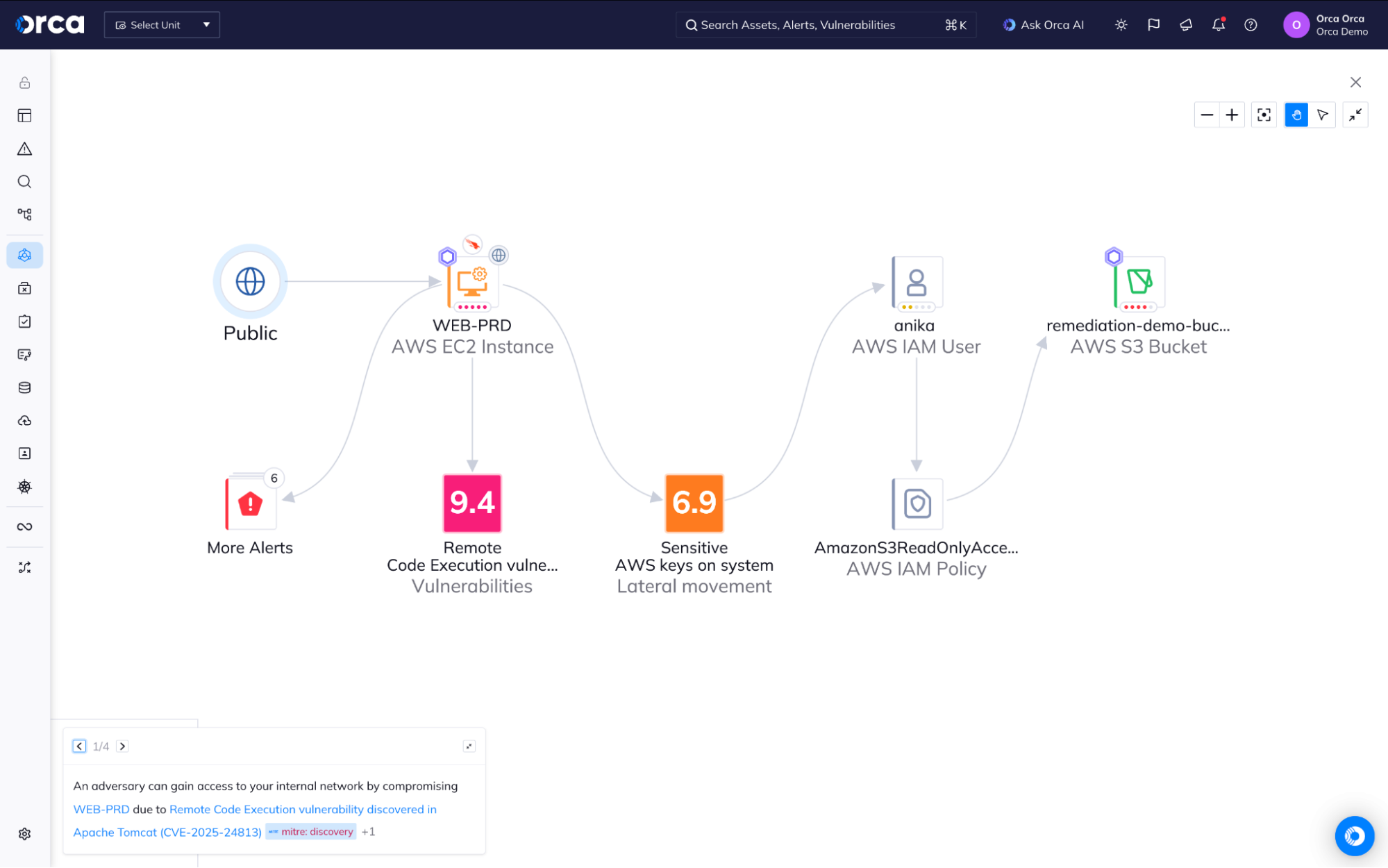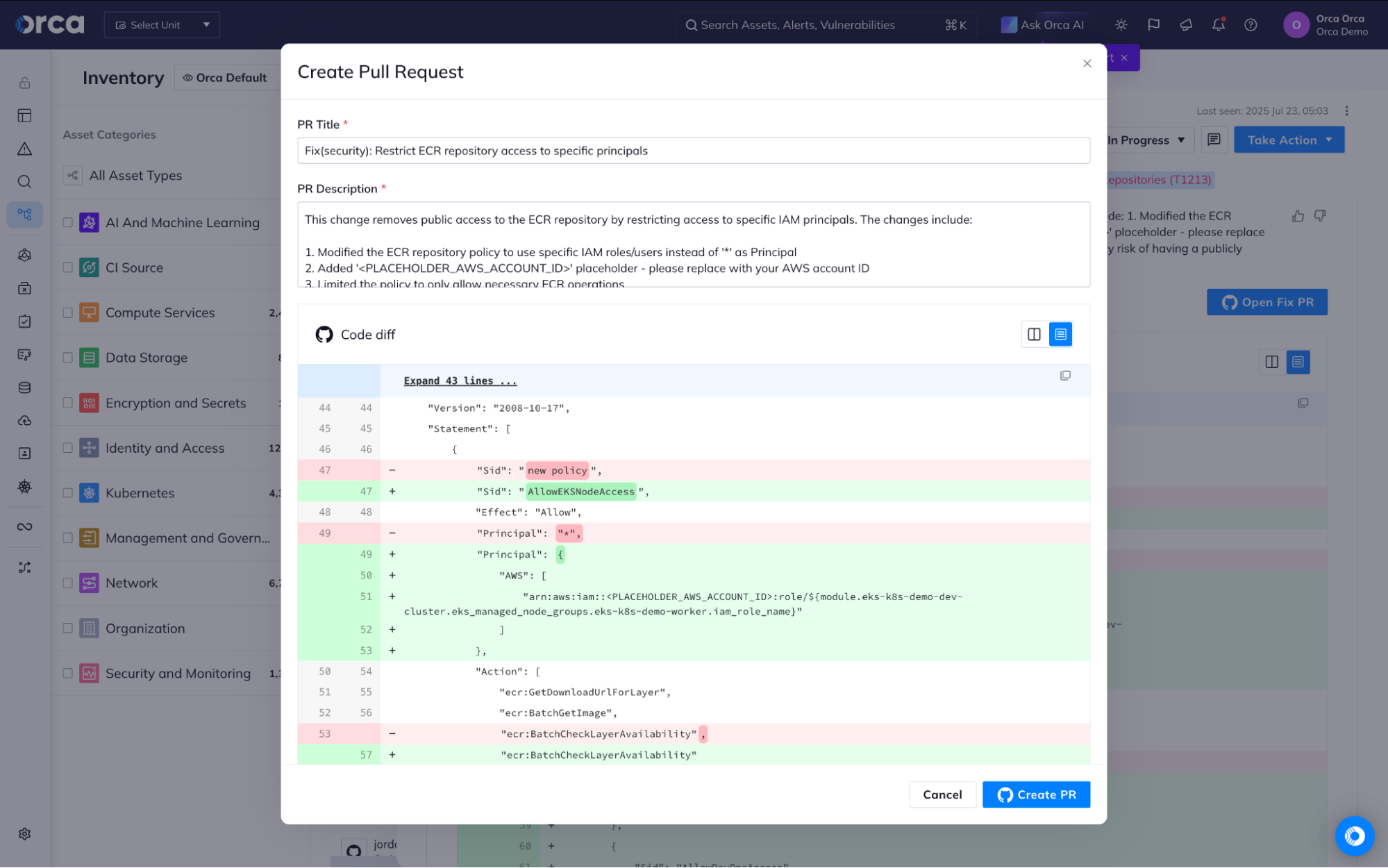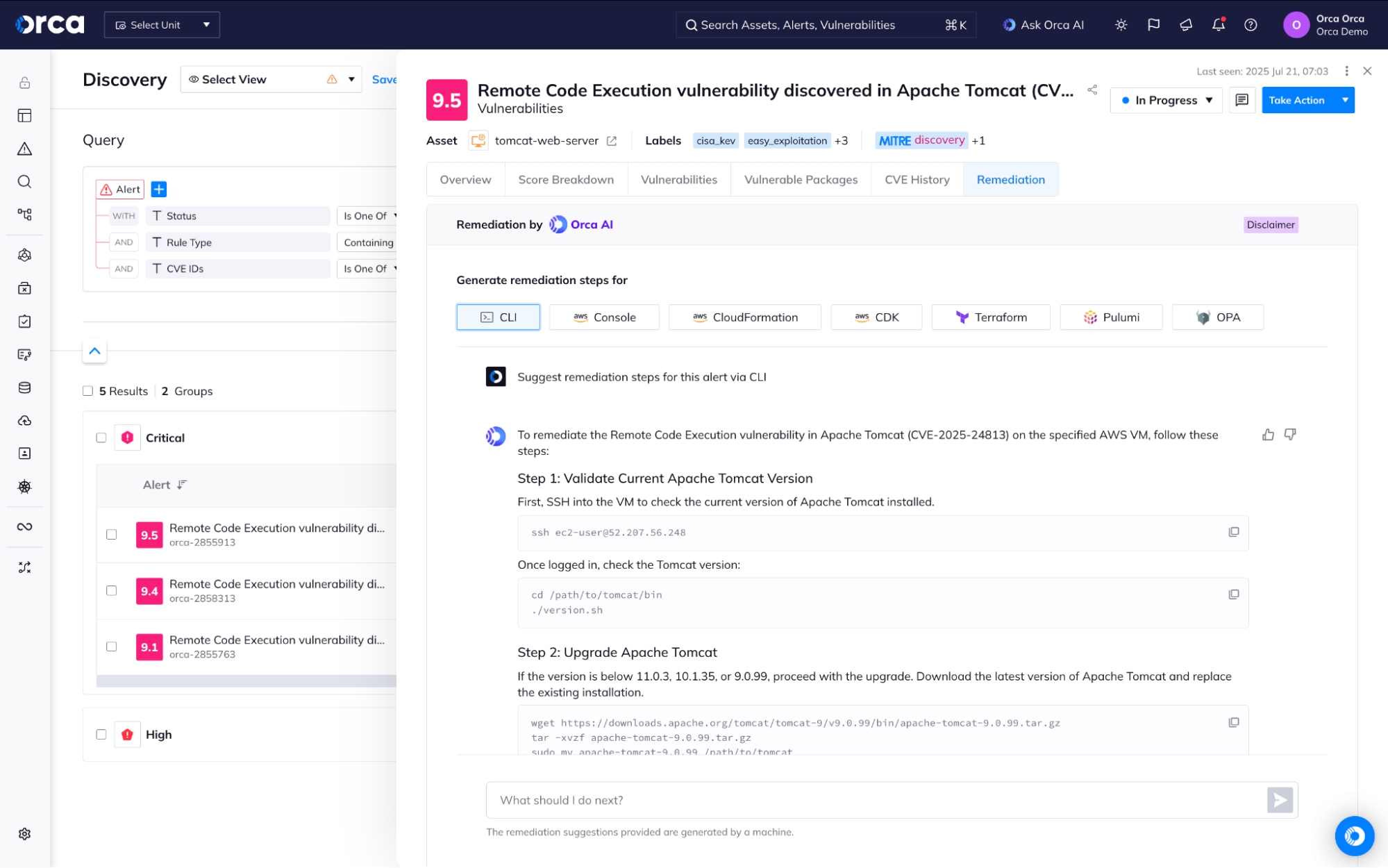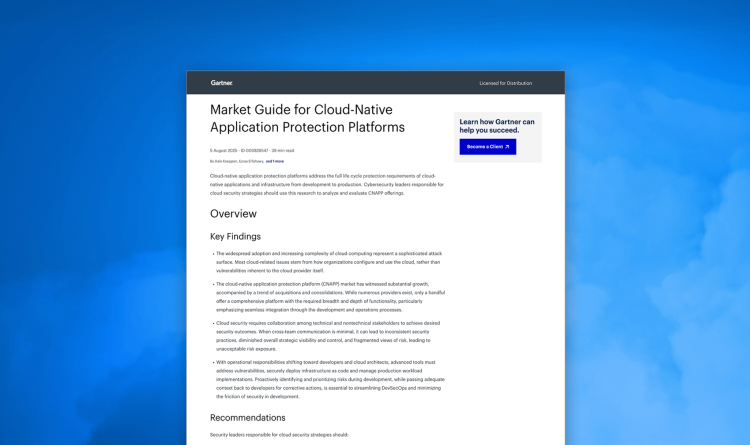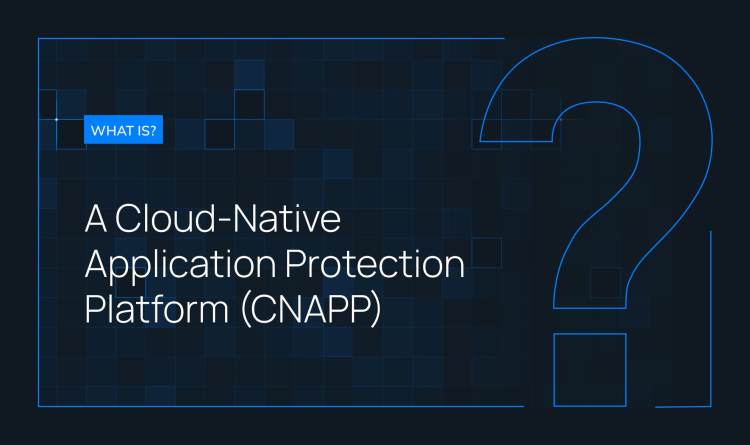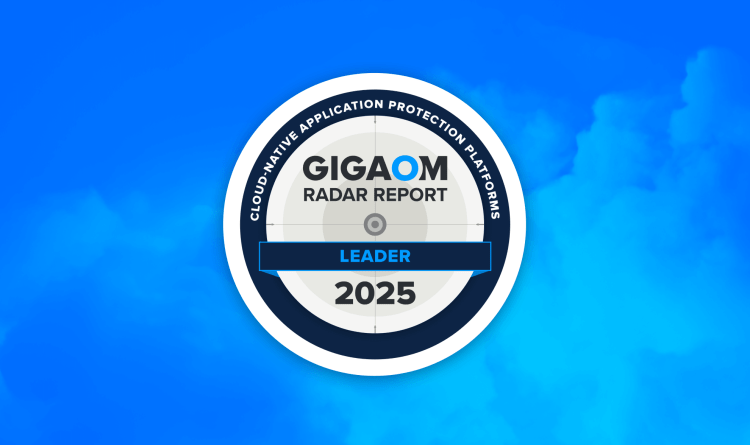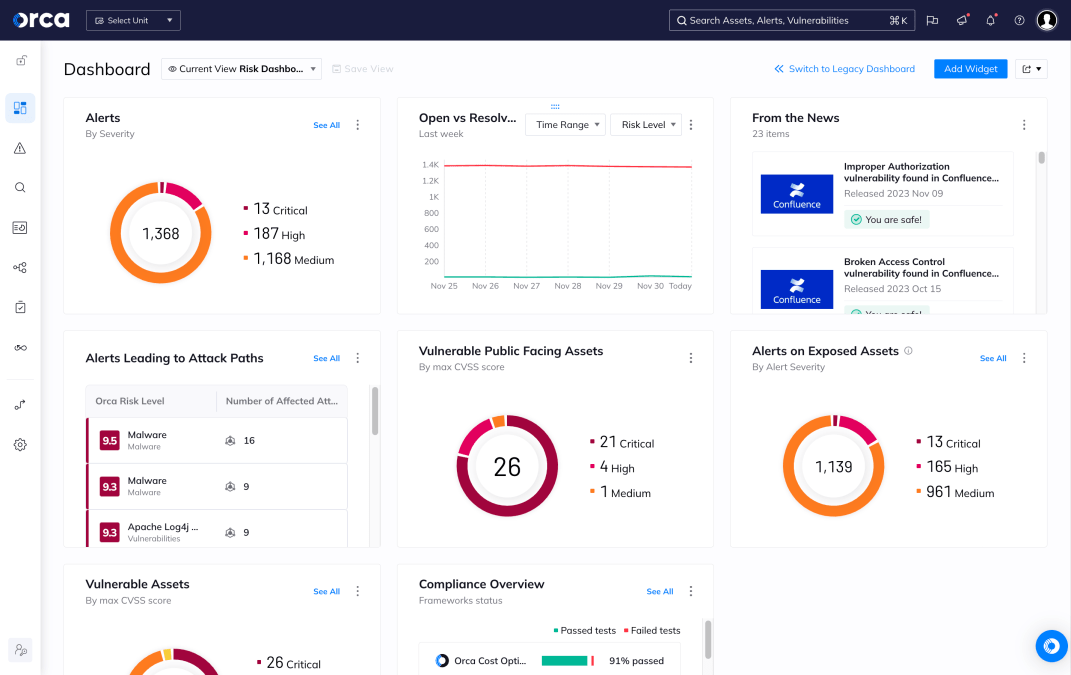
The Challenge
Siloed Point Solutions and Poorly Integrated CNAPPs Slow Teams Down
Security teams waste valuable time deploying and administering disparate point solutions and correlating high-volume, low-risk alert data from multiple or disjointed security tools. This leads to inefficiency and, even more importantly, the inability to see the big picture, which is essential to identifying attack paths and understanding which risks are the most critical and need to be fixed first.
Operational Challenges
Tool sprawl and siloed data make it difficult to adapt to the dynamic complexities of cloud, while keeping up with ongoing compliance audits.
Financial Hurdles
Budget pressures force ROI to be top of mind, especially as the cybersecurity skills gap continues to widen and regulatory risks loom overhead.
Technical Complications
Installing and managing agent-based solutions continue to be cumbersome while risk prioritization remains challenging and attackers get more sophisticated.
Our Approach
The Purpose-Built Cloud Native Application Protection Platform (CNAPP)
The Orca Platform enables any team to identify, prioritize, and remediate risks across the software development lifecycle, driving focus and operational efficiency to secure your cloud.
Prioritize risk with granular context
Orca unifies many different point solutions in one platform, such as CSPM, CWPP, CIEM, DSPM, Container Security, and much more. Orca drives better risk prioritization by analyzing attack paths through toxic combinations of risk across domains.
Embed security in the development lifecycle
Effective cloud security requires an embedded approach across each stage of the application development pipeline. Orca integrates into git repositories and CI/CD workflows to combine visibility with preventative security.
Unify security across your tech stack
Integrate with your existing tools to streamline remediation workflows and put the right information in front of the right people. Orca offers robust bi-directional integrations with ticketing systems like Jira and ServiceNow to drive clearer communication and reduce the overhead of remediation project management.
Analyze risk for every component of your cloud native app
Consolidate many disparate point solutions with a purpose-built CNAPP that combines workload-deep intelligence with cloud security posture, identity and access management, and code scanning in a truly unified data model.
- Streamline cloud security and compliance across all your cloud platforms from a single platform, ensuring policies are aligned and avoiding duplicate efforts.
- Embed security in the SDLC to bring cloud context to code issues.
- Protect running workloads in real time with Orca Sensor for advanced Cloud Detection and Response.
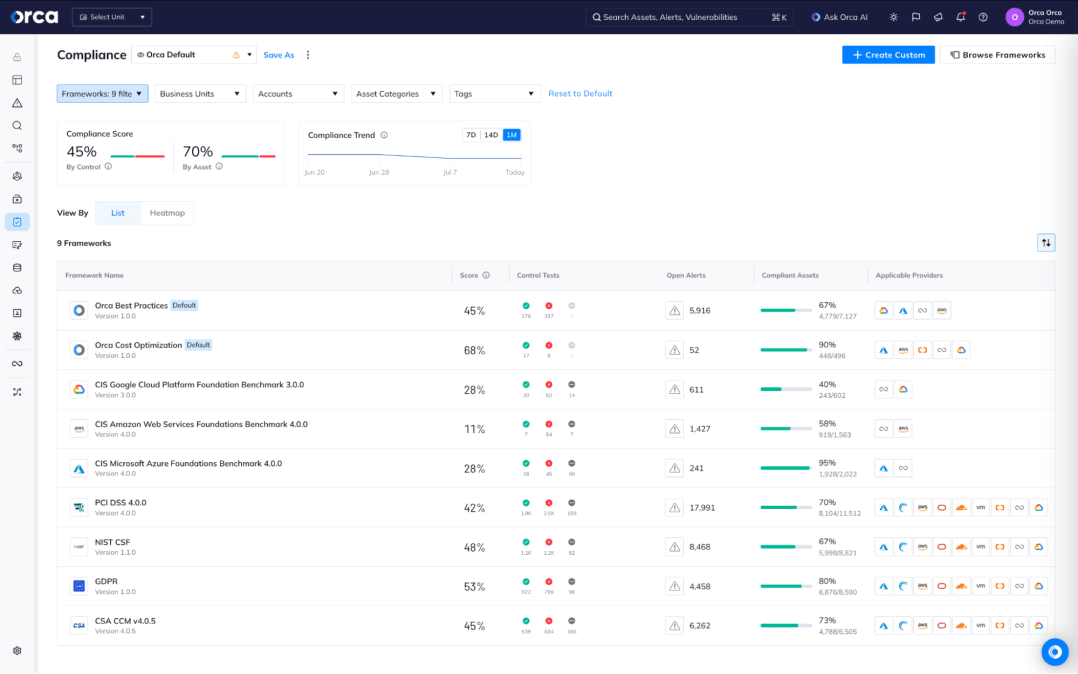
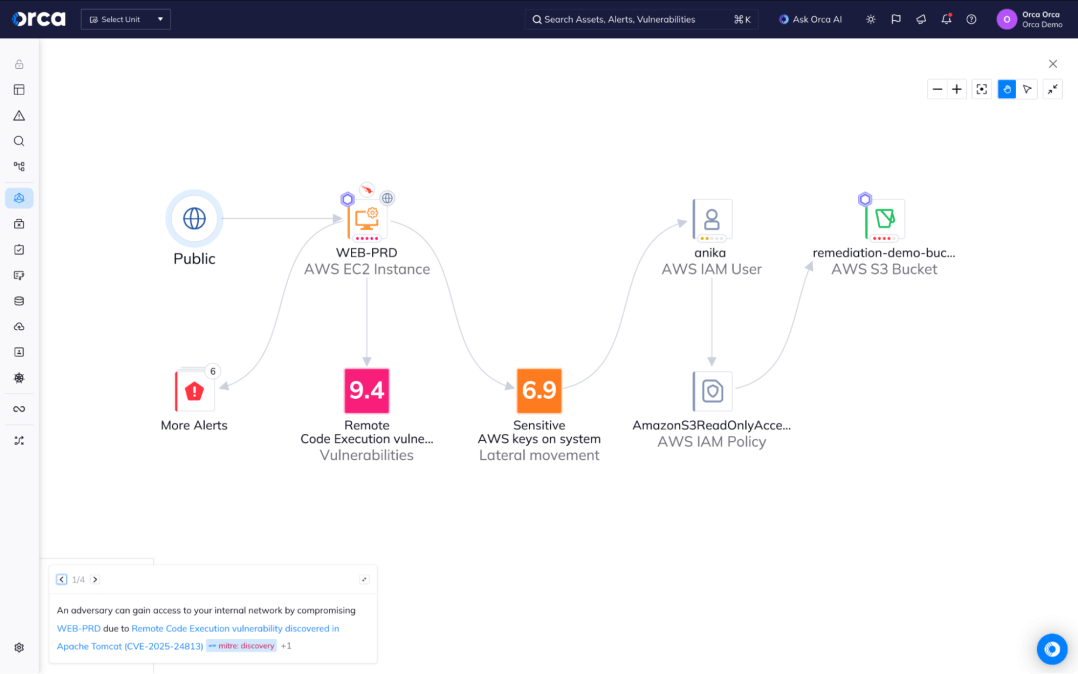
Prioritize risk and pinpoint strategic remediation with attack path analysis
Every alert in Orca is dynamically scored to reflect several factors of risk, including asset context, sensitive data at risk, attack paths, and more. With attack path analysis showing toxic combinations across vulnerabilities, identity risk, sensitive data, and more, Orca helps security teams work smarter and utilize their resources in the most effective way. Instead of trying to fix all risks, Orca shows teams how to remediate strategically by highlighting which cloud security risks:
- Endanger their most critical business assets
- Are part of the most attack paths with the highest severity
- Affect the most cloud assets
- Are exposed by the most cloud assets
Armed with this intelligence, security teams instantly know where their time is best spent, relieving alert overload and burnout, as well as dramatically improving security outcomes.
Bridge the gap between Cloud and Application Security
Prioritize risks across code repos, cloud infrastructure, and running workloads. Foster better collaboration between security team members and developers by using Orca to connect the dots between cloud risks and code origins.
- Orca enables organizations to apply security policies early in development to avoid issues making it to production.
- Automatically run compliance and security checks as part of the CI/CD process, including IaC template and container image scanning.
- Orca traces findings from the production environment to their code origins, greatly accelerating the remediation of risks in cloud native applications.
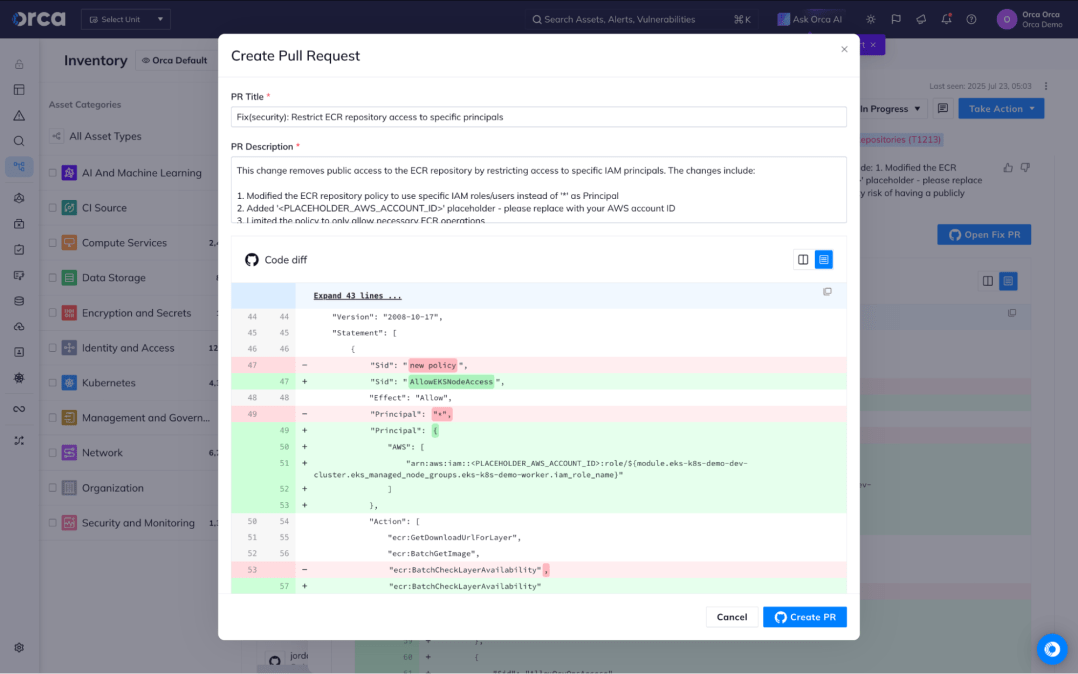
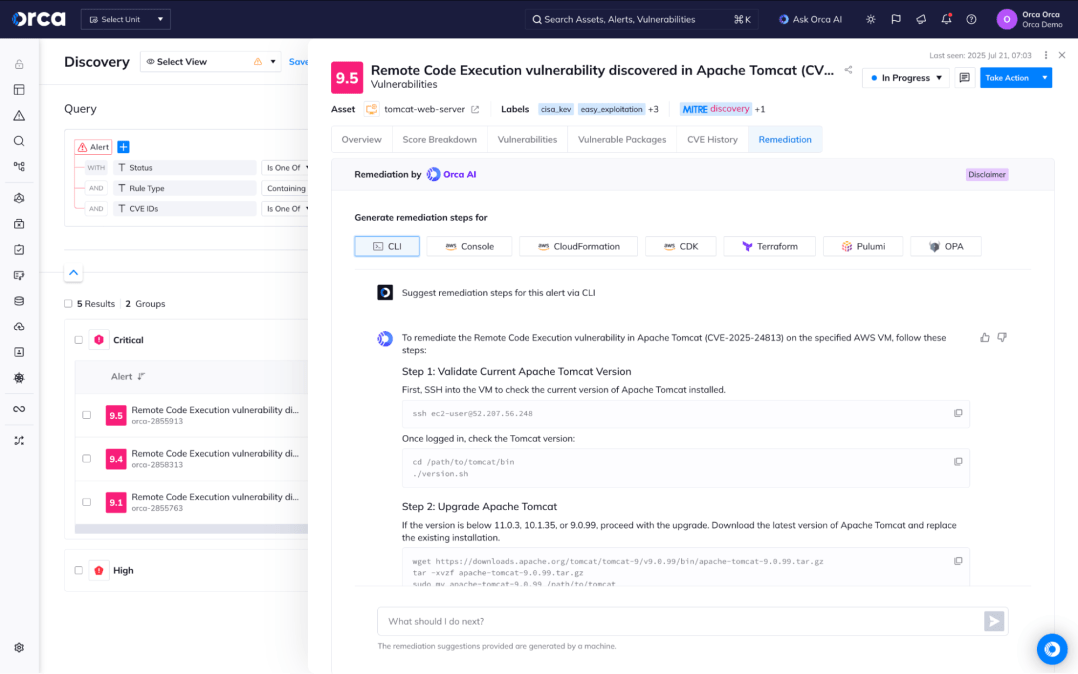
Accelerate security outcomes with Orca AI
Orca AI simplifies how to find what you are looking for and determine proper next steps to resolve security and compliance gaps, saving cloud security, DevOps, and development teams time and effort while significantly improving security outcomes:
- Accelerate cloud security remediation by applying AI-generated code for IaC and CLI or following steps in the console.
- With cloud asset search that is as intuitive as asking a question, teams across the organization are empowered to make data-driven decisions.
- Quickly apply identity policies to effortlessly right-size permissions and entitlements.
Complete and Prioritized Cloud Risk Intelligence
Related Resources
Frequently Asked Questions
A Cloud-Native Application Protection Platform (CNAPP) is a cloud security solution that provides comprehensive coverage and visibility into multi-cloud environments, while also detecting risks across the full technology stack. This includes cloud misconfigurations, mismanaged identity access, vulnerabilities, and insecure workloads.
First named as a cloud security category by Gartner in 2020, CNAPPs have emerged as an alternative solution to many traditional cloud security tools, integrating their disparate capabilities into one platform. This includes Cloud Workload Protection Platform (CWPP), Cloud Security Posture Management (CSPM), Cloud Infrastructure Entitlements Management (CIEM), and other solutions such as compliance tools, API Security and Data Security Posture Management (DSPM).
CNAPPs have emerged to address the challenges of using siloed traditional cloud security solutions. CNAPPs offer a number of benefits, including:
- Improved cloud risk management: Advanced CNAPP solutions centralize cloud security insights, fully contextualize and prioritize risks, detect new issues and threats, and provide reporting, analytics, and remediation guidance.
- Comprehensive cloud visibility: Agentless-first CNAPPs provide complete visibility across cloud infrastructure and workloads, including containers and serverless functions.
- Lower TCO and licensing costs: By consolidating standalone tools, many CNAPPs allow organizations to reduce their cloud security spend.
- Enhanced compliance: CNAPPs ease compliance efforts, lower costs, and improve adherence.
- Support for DevSecOps: Some CNAPPs offer “Shift Left” security capabilities that detect vulnerabilities, misconfigurations, secrets, and malware early in the software development lifecycle (SDLC), making it possible to fix problems before being pushed into production. This reduces development costs, accelerates production, and eases friction between security and development teams.
CNAPPs manage risks and compliance issues across an organization’s entire cloud estate, including multi-cloud environments. CNAPPs perform the following activities to provide complete visibility, coverage, and protection:
- Provide a full inventory of cloud assets: Track and present a detailed inventory of cloud assets and applications.
- Detect cloud risks and generate alerts: Identify all risks and compliance issues in the cloud environment,create alerts, and prioritize issues for remediation.
- Continuously monitor: Continuously monitor the cloud environment to discover new assets, issues, and risks.
- Integrate with productivity and security tools: Communicate with common security and productivity tools (e.g., SIEM, ticketing systems, developer tools, etc.) to streamline and enhance workflows.
- Reporting: Generate reports to assist with compliance efforts, internal and external communications, and other purposes.
CNAPP actually combines the capabilities of CSPM (detect misconfigurations and compliance), CWPP (detect vulnerabilities, malware, and exposed secrets in cloud-based workloads across virtual machines (VMs), containers, and serverless functions), CIEM (manage access rights and permissions for your cloud resources), Data Security Posture Management (DSPM), Kubernetes and container security, API security, and more.
Orca Cloud Security Platform was built from the ground up as a truly unified cloud native platform: a single platform that provides 100% coverage, detects risks at every layer of your cloud estate, and sees the bigger picture to effectively identify the most critical risks that security teams should focus on.
Because Orca is agentless-first, the platform deploys in minutes with no downtime and without impacting workload performance or DevOps workflows—while maintaining full visibility as your cloud estate evolves. In addition to containers, serverless, and cloud infrastructure, Orca discovers and monitors idle, paused, and stopped workloads, orphaned systems, and devices that can’t support agents.
